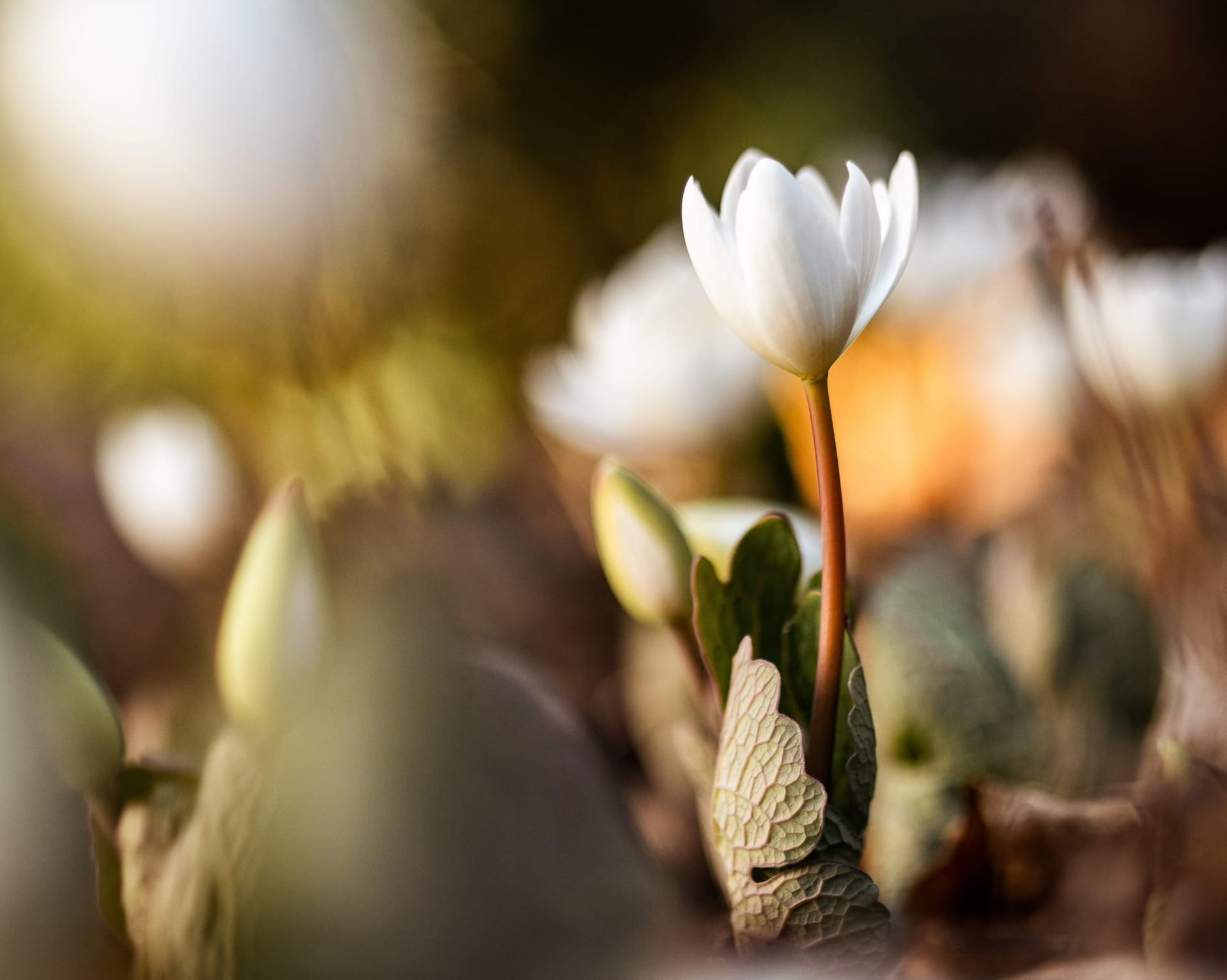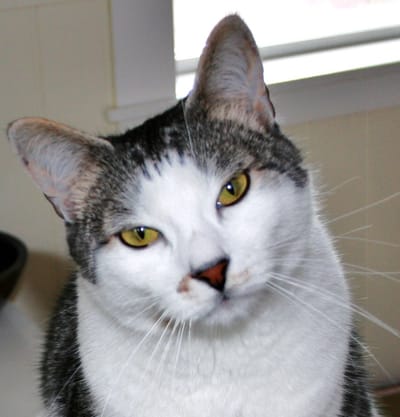Blood Roots

“All the soarings of my mind begin in my blood.” — Rainer Maria Rilke
Slicing through the black plastic pipe in thick morning fog, I am thinking of sun. The architecture of pipes and tubing tunneling this landscape will bring water to my plants, drip by precious drip, rationed, to all the hidden mouths made of roots.
I grip the blade, grasp the pipe. But I go too far.
My palm is smeared with blood and dirt, a downy white feather pasted in the mix, as if I’ve crushed a baby bird.
Now I am a personal irrigation system. My blood drips into the narrow trench, the red clay below the trucked-in soil and mulch, the network of white threads—now stained red, blood roots—feeding and drinking for some shoot not yet emerged above ground.
As I look down, an earthworm writhes out of the roots. A drop of my blood lands on his pale, bloodless-looking body. He doesn’t seem to mind.
He slides toward the pipe and peers into the dark opening, considering his options—is this the famous road less travelled? But earthworms prefer a more organic path, so he pushes his face into the freshly disturbed earth, wearing my blood like a little backpack.
I want to get this project done, so I don’t stop to tend a cut. Sometimes the blood falls and disappears so quickly, I am reminded of what I am: mostly water, some sugar and protein, minerals knotted together, trace vitamins, pockets of oxygen, electrolytes, human juice waiting to be consumed.
As I work near a lupine, its purple flowers a series of ladders for two bees humming as they climb, I squeeze a couple of drops from the wound now nearly sealed. I think, transfusion, the chance to grow into a lupine and let myself be licked by bees, also blood meal for the invisible life burning in the dirt.

The first and only true Bloodroots I ever encountered were off a path through hemlocks and near-naked hardwoods within the Delaware Gap of eastern Pennsylvania.
When I first saw them, through openings in the trees, I thought I was looking at a distant pond. An immense colony had spread out in damp shadows, and the profusion of white petals catching the muted light seemed to literally float over the otherwise empty April ground.
It was my fifth spring living in Pennsylvania. I’d gone into many patches of Pennsylvania’s forests looking for those wildflowers and birds found only in the East because I knew my sense of home would eventually bring me back West.
Bloodroots and Ovenbirds topped my wish list since my first spring.
By my fourth spring, I’d finally figured out how to see an Ovenbird. I’d been hearing the calls each year—sounding like ‘teacher, teacher, teacher, teacher,’ rising in volume—but frustratingly, my eyes couldn’t find a single Ovenbird in the trees. Sometimes you have to know ‘how’ to look.

Once I figured out that Ovenbirds are ventriloquists who favor the forest floor, blending like petite streaked thrushes into the understory, all I needed to do was watch the ground or look in low limbs a few feet above or below or to the side of wherever I heard their singing.
Suddenly, I realized they were everywhere around me, counting more than two dozen Ovenbirds flitting or trotting through the woods just below my house in less than an hour.
Bloodroots are more difficult. Unlike Ovenbirds that will find you if you sit patiently in one spot, you have to go in search of Bloodroots. Since Bloodroots shed their petals after only a few days, you’re more likely to find their lobed leaves than their flowers.
When I finally stumbled upon them, making that unplanned hike in the Gap, I was surprised to feel joy, to feel blessed, no kidding, blessed—as if the world was saying, okay, you’ve been pretty good, we’ll give you this.’

It struck me then that the name must come from that feeling. In the chill of one April afternoon, my blood seemed to rush up through my body, from the soles of my fleet planted in the detritus near those blossoms, surging into my core, finally flushing my cheeks.
I still feel rooted in that moment. Who says time travel isn’t possible? Memory and writing summon the past and sow it in the present.
The name, Bloodroot, actually comes from the color of the sap found in its rhizome, which is blood red and seems to coagulate after the rhizome is nicked.
The sap, while life-giving to the plant, is poisonous to animals, including, of course, people. The ruddy sap can kill cells and disfigure skin, though it has been a key ingredient in traditional Native American remedies. A form of it is still used in some mouthwashes despite links to cancer and internal bleeding if ingested (your FDA at work for you!).
Mind returning from its time travel, I think, soon these persistent spring rains will stop, the daily fog will dissipate by noon, and this mud that I kneel in will turn hard. The synthetic arteries and capillaries I’m repairing just below my garden’s surface will create enough tiny pools of moisture to grow those plants too vulnerable to bloom unaided.

The wild ones will do just fine. Near the gate, poppy plants sprawl out over the walkway, their orange blossoms tight as fists, waiting for warm light rather than water before opening. I’m reminded that the Bloodroot is a member of the poppy family, too.
I make a fist and open it, no blood, just dirt now. Then I see the feather imbedded, and when I lift it away, it leaves its impression, a delicate fossil in my palm.







Member discussion